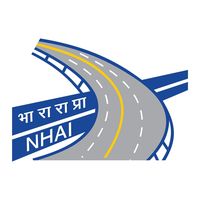Infrastructure Expansion: A Roadmap to Progress
October 19, 2024, 4:57 am

Location: France, Ile-de-France, Saint-Ouen-sur-Seine
Employees: 10001+
Founded date: 1928
Total raised: $10M

Location: India, Delhi, New Delhi
Employees: 1001-5000
Founded date: 1988
Total raised: $4.83B
In the heart of India, infrastructure is the lifeblood of growth. Recent approvals and projects signal a commitment to enhance connectivity and bolster economic development. The Central Government's green light for the four-laning of the Kangra highway in Himachal Pradesh is a prime example. This 50-kilometer stretch of NH-88 is not just a road; it’s a vital artery connecting towns and facilitating tourism.
The expansion from two lanes to four is a strategic move. It promises to ease congestion, reduce travel time, and improve safety. Imagine a river of vehicles flowing smoothly instead of a clogged drain. This project, overseen by the National Highways Authority of India (NHAI), aims to transform the travel experience for locals and tourists alike.
The Kangra highway is more than a route; it’s a gateway to the picturesque landscapes of Himachal Pradesh. With better roads, the region can expect an influx of tourists, boosting local businesses and creating jobs. It’s a win-win situation. Improved connectivity can attract investments, fostering economic growth in an area often challenged by its rugged terrain.
But the Kangra highway is just one piece of a larger puzzle. The Bharatmala Pariyojana, a monumental initiative, aims to enhance India's road network by developing 34,800 kilometers of highways. Recently, the government approved a sub-Rs 1,000 crore shortcut project under this scheme. This initiative focuses on creating efficient routes that cut travel times and streamline logistics.
Shortcuts are not just about saving time; they are about smart planning. By identifying critical areas for improvement, the NHAI can decongest heavily trafficked routes. This approach not only accelerates construction but also ensures cost-effectiveness. The goal is clear: to keep expenditures below Rs 1,000 crore while maximizing impact.
The Bharatmala project is ambitious. It aims to enhance trade and transport, making India more competitive on a global scale. Faster movement of goods translates to lower vehicle operating costs and improved logistics. It’s a chain reaction, where each link strengthens the economy.
In the urban landscape, the Nagpur Metro Phase 2 project is another feather in the cap of India’s infrastructure ambitions. Rail Vikas Nigam (RVNL) has secured the bid for the civil package C6, which includes the construction of 10 elevated metro stations. This project spans 19.4 kilometers, connecting vital areas of the city.
Metro systems are the veins of urban transport. They reduce traffic congestion and provide a reliable means of travel. The Nagpur Metro will not only enhance connectivity but also promote sustainable urban development. As cities grow, efficient public transport becomes essential.
Meanwhile, Chennai Metro is making strides with its first driverless trainset for Phase II. This project, developed by Alstom, promises to revolutionize urban travel. The new trains are designed for a 26-kilometer corridor, featuring both elevated and underground stations.
Driverless technology is the future. It offers an efficient, eco-friendly, and comfortable travel experience. Passengers can expect a seamless journey, free from the stress of traffic. This innovation reflects a broader trend towards smart mobility solutions in urban areas.
Yet, infrastructure development is not without its challenges. The National Green Tribunal (NGT) has directed Uttarakhand to establish proper waste management facilities in Kedarnath. The plea highlights the pressing issue of untreated sewage polluting the Mandakini river.
Environmental concerns must be at the forefront of infrastructure projects. Sustainable development is not just a buzzword; it’s a necessity. The NGT’s directive underscores the importance of balancing growth with environmental stewardship.
As India forges ahead with its infrastructure ambitions, the focus must remain on holistic development. Roads, metros, and waste management systems are interconnected. Each project impacts the others, creating a complex web of infrastructure that supports daily life.
The government's commitment to improving infrastructure is commendable. It reflects a vision for a connected, efficient, and sustainable future. With each new project, India moves closer to realizing its potential as a global economic powerhouse.
In conclusion, infrastructure is the backbone of progress. The recent approvals for road expansions, metro projects, and waste management initiatives are steps in the right direction. They promise to enhance connectivity, boost the economy, and improve the quality of life for millions.
As these projects unfold, they will shape the landscape of India for generations to come. The road ahead is bright, but it requires careful planning and execution. With a focus on sustainability and efficiency, India can build a future that is not only prosperous but also responsible.
The expansion from two lanes to four is a strategic move. It promises to ease congestion, reduce travel time, and improve safety. Imagine a river of vehicles flowing smoothly instead of a clogged drain. This project, overseen by the National Highways Authority of India (NHAI), aims to transform the travel experience for locals and tourists alike.
The Kangra highway is more than a route; it’s a gateway to the picturesque landscapes of Himachal Pradesh. With better roads, the region can expect an influx of tourists, boosting local businesses and creating jobs. It’s a win-win situation. Improved connectivity can attract investments, fostering economic growth in an area often challenged by its rugged terrain.
But the Kangra highway is just one piece of a larger puzzle. The Bharatmala Pariyojana, a monumental initiative, aims to enhance India's road network by developing 34,800 kilometers of highways. Recently, the government approved a sub-Rs 1,000 crore shortcut project under this scheme. This initiative focuses on creating efficient routes that cut travel times and streamline logistics.
Shortcuts are not just about saving time; they are about smart planning. By identifying critical areas for improvement, the NHAI can decongest heavily trafficked routes. This approach not only accelerates construction but also ensures cost-effectiveness. The goal is clear: to keep expenditures below Rs 1,000 crore while maximizing impact.
The Bharatmala project is ambitious. It aims to enhance trade and transport, making India more competitive on a global scale. Faster movement of goods translates to lower vehicle operating costs and improved logistics. It’s a chain reaction, where each link strengthens the economy.
In the urban landscape, the Nagpur Metro Phase 2 project is another feather in the cap of India’s infrastructure ambitions. Rail Vikas Nigam (RVNL) has secured the bid for the civil package C6, which includes the construction of 10 elevated metro stations. This project spans 19.4 kilometers, connecting vital areas of the city.
Metro systems are the veins of urban transport. They reduce traffic congestion and provide a reliable means of travel. The Nagpur Metro will not only enhance connectivity but also promote sustainable urban development. As cities grow, efficient public transport becomes essential.
Meanwhile, Chennai Metro is making strides with its first driverless trainset for Phase II. This project, developed by Alstom, promises to revolutionize urban travel. The new trains are designed for a 26-kilometer corridor, featuring both elevated and underground stations.
Driverless technology is the future. It offers an efficient, eco-friendly, and comfortable travel experience. Passengers can expect a seamless journey, free from the stress of traffic. This innovation reflects a broader trend towards smart mobility solutions in urban areas.
Yet, infrastructure development is not without its challenges. The National Green Tribunal (NGT) has directed Uttarakhand to establish proper waste management facilities in Kedarnath. The plea highlights the pressing issue of untreated sewage polluting the Mandakini river.
Environmental concerns must be at the forefront of infrastructure projects. Sustainable development is not just a buzzword; it’s a necessity. The NGT’s directive underscores the importance of balancing growth with environmental stewardship.
As India forges ahead with its infrastructure ambitions, the focus must remain on holistic development. Roads, metros, and waste management systems are interconnected. Each project impacts the others, creating a complex web of infrastructure that supports daily life.
The government's commitment to improving infrastructure is commendable. It reflects a vision for a connected, efficient, and sustainable future. With each new project, India moves closer to realizing its potential as a global economic powerhouse.
In conclusion, infrastructure is the backbone of progress. The recent approvals for road expansions, metro projects, and waste management initiatives are steps in the right direction. They promise to enhance connectivity, boost the economy, and improve the quality of life for millions.
As these projects unfold, they will shape the landscape of India for generations to come. The road ahead is bright, but it requires careful planning and execution. With a focus on sustainability and efficiency, India can build a future that is not only prosperous but also responsible.
